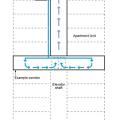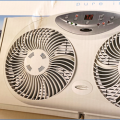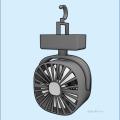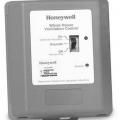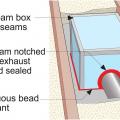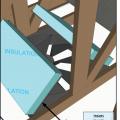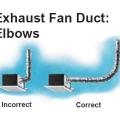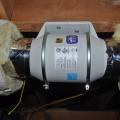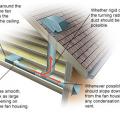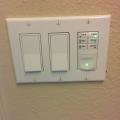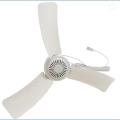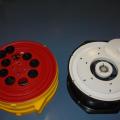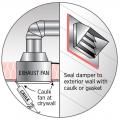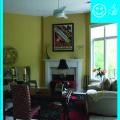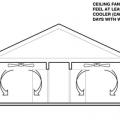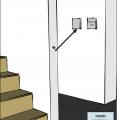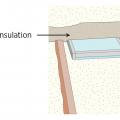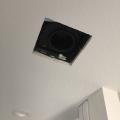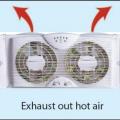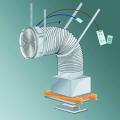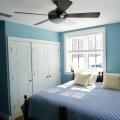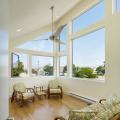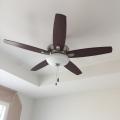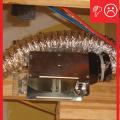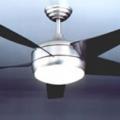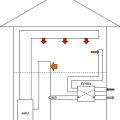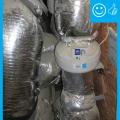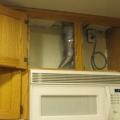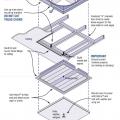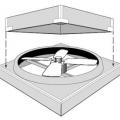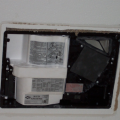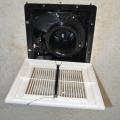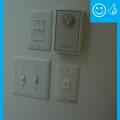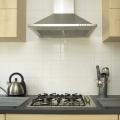Showing results 1 - 50 of 130
This central ventilation system uses an energy recovery ventilator to supply air to the corridor and exhaust air from the elevator shaft of a multifamily building
A central fan-integrated supply system uses a fresh air intake ducted to the home's central furnace or air handler unit to supply fresh air throughout the home
A Corsi-Rosenthal Box is a highly effective DIY air cleaner made of easy to obtain materials such as HVAC filters, a box fan, cardboard, and tape
A reversible window fan can operate via thermostatic or remote control and can selectively exhaust air or bring in outdoor air
A variety of battery-powered fans can be used for a cool room without electric power; most charge off a USB charger so they can be solar charged
A ventilation controller with a manual override is located on a central air handler fan that is located in an accessible location
Air flow is produced when central HVAC fan is energized (set thermostat to “fan”)
Air seal and insulate around the exhaust fan with a rigid foam box
Air seal around kitchen and bathroom exhaust fans to keep conditioned air from leaking into unconditioned space.
Allow two to three feet of straight duct run from the fan exhaust port to the first elbow
An in-line exhaust fan supplements the ability to exhaust moisture-laden air and lint from a dryer
Bathroom exhaust fans are timer-operated to encourage removal of moisture from the home.
Calibrated blower door fans are used for envelope leakage testing
Caulk or foam seal between the exhaust fan housing and the ceiling gypsum; install a gasket or caulk around the exterior exhaust duct vent
Ceiling fan meets minimum clearance
Ceiling fans can be used to aid a night flush strategy by helping to cool down wall and floor surfaces more thoroughly at night, and by providing comfort ventilation during the day
Continuously-operating ventilation & exhaust fans include readily accessible override controls
Cut a neat hole in the ceiling with smooth edges in which the exhaust fan housing will fit snugly
Double fan window units can have multiple operational modes; most often outdoor air will be brought in at night when outdoor conditions are cooler
Ducted whole-house fans should be installed with the duct curved and the fan suspended from rafters to reduce noise and vibration transmission to the living area.
ENERGY STAR ceiling fans can help occupants feel cool so HVAC air conditioning systems can be turned down for energy savings.
ENERGY STAR requires exhaust fans set for intermittent operation to have a sound rating of ≤ 3 sones and exhaust fans set for continual operation to have a sound rating of ≤ 1 sone.
ENERGY STAR-rated ceiling fans and openable windows oriented to prevailing summer breezes help provide low-cost cooling.
ENERGY STAR-rated ceiling fans save energy when operating and provide cooling movement to reduce the need for coolant-based air conditioning.
Exhaust fan installed but in wrong direction causing excessive bend and duct is uninsulated
Exhaust pipe should be made of smooth, rigid duct and any bends should be gradual, not sharp
If integrating an ERV/HRV with the heating/cooling duct system, add dedicated ducts for either the supply or return side to prevent short-circuiting of air distribution
In this ventilation configuration for a multifamily building, outside air enters through a dedicated outdoor air system (DOAS), and inside air exits the space through bathroom and kitchen exhaust fans
Install the fan either in the range hood, the cabinet above the stove, or on the wall above the stove
Installing an ENERGY STAR ceiling fan is a low-energy way to improve comfort in a designated cool room
Intermittent supply and exhaust fans rated at ≤ 3 sones by manufacturer, unless rated flow ≥ 400 CFM
Lower-cost local ERVs are usually installed in a ceiling to supply outdoor air to and exhaust air from the room in which they are located
Opening the outlet on a bath fan reveals model information and provides access to the motor
